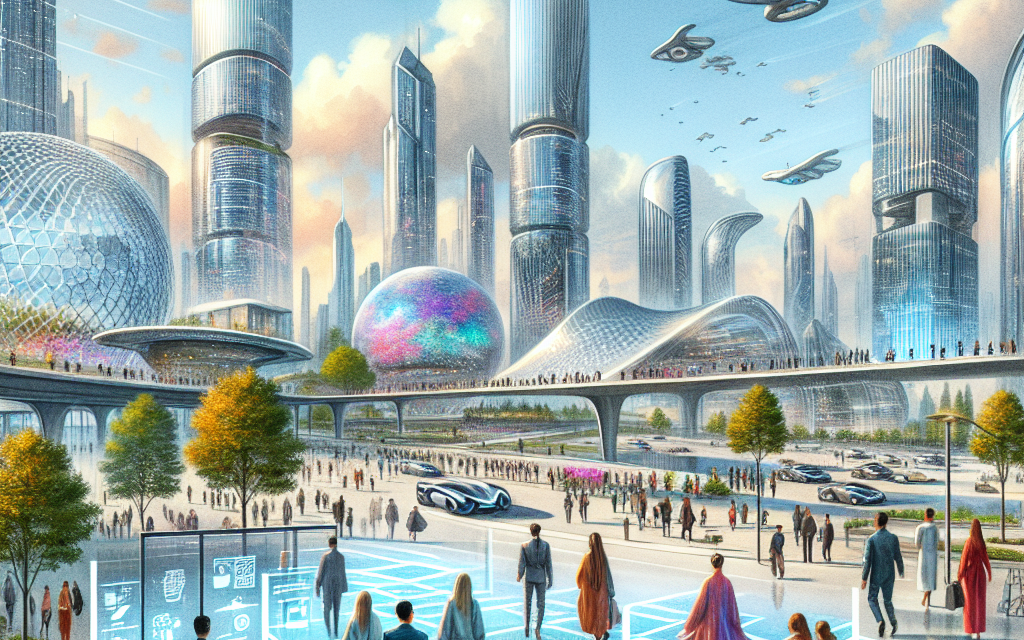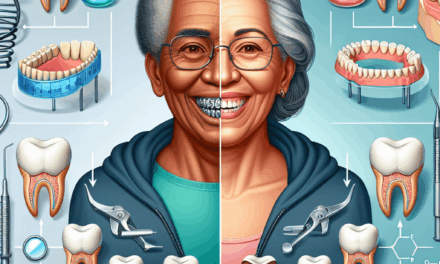Emerging Aesthetic Trends to Watch in 2025 | Nextech
As we approach 2025, the world of aesthetics is evolving at an unprecedented pace, driven by technological advancements, cultural shifts, and changing consumer preferences. This article explores five key aesthetic trends that are set to shape various industries, including fashion, interior design, digital art, and more. By examining these trends in detail, we aim to provide valuable insights into how they will influence our lives and the creative landscape in the coming years.
1. Sustainable Aesthetics: The Rise of Eco-Conscious Design
In recent years, sustainability has transitioned from a niche concern to a mainstream priority across various sectors. As we move into 2025, the aesthetic of sustainability will become increasingly prominent, influencing everything from product design to fashion and architecture.
Consumers are becoming more aware of the environmental impact of their choices, leading to a demand for products that are not only aesthetically pleasing but also eco-friendly. This trend is characterized by the use of sustainable materials, ethical production practices, and designs that promote longevity and minimalism.
- Materials Matter: Designers are increasingly opting for materials that are biodegradable, recycled, or sourced sustainably. For instance, brands like Stella McCartney have pioneered the use of vegan leather and organic cotton in their collections.
- Minimalism and Functionality: The minimalist aesthetic, which emphasizes simplicity and functionality, aligns perfectly with sustainable design principles. This trend encourages consumers to invest in fewer, high-quality items that serve multiple purposes.
- Biophilic Design: Incorporating natural elements into design is gaining traction. This includes using natural light, plants, and organic shapes to create spaces that foster a connection with nature.
- Upcycling and Vintage: The upcycling movement is gaining momentum, with designers repurposing old materials and garments to create new, unique pieces. Vintage fashion is also making a comeback, as consumers seek one-of-a-kind items with a story.
- Transparency and Ethics: Brands that prioritize transparency in their supply chains and production processes are gaining consumer trust. This trend is leading to a more informed consumer base that values ethical practices.
Case studies of brands like Patagonia and Everlane illustrate how sustainable aesthetics can be successfully integrated into business models. Patagonia’s commitment to environmental activism and transparency has resonated with consumers, while Everlane’s “Radical Transparency” approach has set a new standard for ethical fashion.
As we look ahead, the sustainable aesthetic trend will not only redefine consumer expectations but also challenge designers to innovate in ways that prioritize the planet without sacrificing beauty or functionality.
2. Digital Aesthetics: The Fusion of Reality and Virtuality
The digital realm is rapidly evolving, and with it comes a new aesthetic that blends the physical and virtual worlds. As we approach 2025, digital aesthetics will play a crucial role in shaping how we perceive art, fashion, and design.
With the rise of augmented reality (AR), virtual reality (VR), and digital art platforms, creators are exploring new ways to engage audiences. This trend is characterized by immersive experiences that challenge traditional notions of art and design.
- Augmented Reality in Fashion: Brands are leveraging AR to create interactive shopping experiences. For example, companies like Gucci and Nike have developed AR apps that allow customers to virtually try on products before purchasing.
- Virtual Fashion Shows: The COVID-19 pandemic accelerated the shift towards virtual fashion shows, and this trend is expected to continue. Designers are creating digital collections that can be showcased in immersive online environments.
- Digital Art and NFTs: The rise of non-fungible tokens (NFTs) has transformed the art world, allowing digital artists to monetize their work in unprecedented ways. Platforms like OpenSea and Rarible are leading the charge in this new digital marketplace.
- Gamification of Design: The integration of gaming elements into design is becoming more prevalent. Brands are creating interactive experiences that engage consumers in playful and innovative ways.
- Virtual Influencers: The emergence of virtual influencers, such as Lil Miquela, is reshaping the landscape of social media marketing. These digital personas are crafted with specific aesthetics and narratives, appealing to a tech-savvy audience.
As digital aesthetics continue to evolve, they will challenge traditional boundaries and redefine how we experience art and design. The fusion of reality and virtuality will create new opportunities for creativity and engagement, allowing artists and designers to push the limits of their craft.
3. Nostalgia Aesthetics: The Return of Retro Influences
Nostalgia has a powerful influence on consumer behavior, and as we approach 2025, we can expect to see a resurgence of retro aesthetics across various industries. This trend taps into the collective memory of past decades, evoking feelings of comfort and familiarity.
From fashion to interior design, nostalgia aesthetics are characterized by the revival of styles, colors, and patterns from previous eras. This trend is not just about imitation; it’s about reinterpreting and modernizing vintage elements to create something fresh and relevant.
- Y2K Revival: The early 2000s aesthetic is making a comeback, with fashion brands embracing bold colors, low-rise jeans, and logo-centric designs. This revival is particularly popular among Gen Z consumers who are drawn to the playful and experimental nature of Y2K fashion.
- Retro Color Palettes: Color trends are also reflecting nostalgia, with muted tones and pastel shades reminiscent of the 70s and 80s gaining popularity. Brands are incorporating these colors into their products to evoke a sense of warmth and familiarity.
- Vintage Furniture and Decor: In interior design, vintage furniture and decor are being embraced for their character and charm. Thrift stores and online marketplaces are thriving as consumers seek unique pieces that tell a story.
- Music and Pop Culture References: Nostalgia aesthetics are often intertwined with music and pop culture. Brands are leveraging iconic songs, movies, and television shows from the past to create campaigns that resonate with consumers.
- Artistic Homages: Artists are drawing inspiration from past movements, such as pop art and surrealism, to create contemporary works that pay homage to their predecessors. This blending of old and new creates a rich tapestry of visual culture.
Brands like Urban Outfitters and ASOS are capitalizing on the nostalgia trend by curating collections that celebrate retro styles. By tapping into consumers’ emotional connections to the past, these brands are able to create a sense of belonging and community.
As we move forward, nostalgia aesthetics will continue to shape consumer preferences, offering a comforting escape in an increasingly fast-paced world. This trend highlights the importance of storytelling in design, as brands seek to connect with consumers on a deeper level.
4. Tech-Infused Aesthetics: The Intersection of Art and Technology
The integration of technology into art and design is creating a new aesthetic that blurs the lines between the two disciplines. As we approach 2025, tech-infused aesthetics will become increasingly prevalent, influencing everything from product design to visual art.
This trend is characterized by the use of cutting-edge technologies, such as artificial intelligence (AI), machine learning, and generative design, to create innovative and visually striking works. Artists and designers are exploring how technology can enhance creativity and push the boundaries of traditional aesthetics.
- Generative Art: Artists are using algorithms and code to create generative art, which is characterized by its dynamic and ever-changing nature. This approach allows for the creation of unique pieces that evolve over time.
- AI-Driven Design: AI is being used to streamline the design process, enabling designers to create complex patterns and structures with ease. Brands like Adidas are utilizing AI to develop custom footwear designs based on consumer preferences.
- Interactive Installations: Tech-infused aesthetics are also evident in interactive art installations that engage audiences in immersive experiences. Artists like teamLab are creating digital art environments that respond to viewer interactions.
- Wearable Technology: The fusion of fashion and technology is giving rise to wearable tech that is both functional and aesthetically pleasing. Brands like Oura and Fitbit are designing health-tracking devices that prioritize style without compromising on performance.
- 3D Printing in Design: 3D printing technology is revolutionizing product design, allowing for the creation of intricate and customized pieces. This technology is being embraced by designers in various fields, from fashion to architecture.
As tech-infused aesthetics continue to evolve, they will challenge traditional notions of creativity and craftsmanship. The intersection of art and technology will open up new possibilities for innovation, allowing artists and designers to explore uncharted territories.
5. Global Aesthetics: Celebrating Cultural Diversity
In an increasingly interconnected world, global aesthetics are emerging as a powerful trend that celebrates cultural diversity and inclusivity. As we approach 2025, this trend will shape how we perceive art, fashion, and design, fostering a greater appreciation for different cultures and traditions.
Global aesthetics are characterized by the blending of influences from various cultures, resulting in unique and vibrant expressions of creativity. This trend encourages collaboration and cross-cultural exchange, allowing artists and designers to draw inspiration from a rich tapestry of global traditions.
- Fusion Fashion: Designers are embracing fusion fashion, which combines elements from different cultural styles to create innovative and inclusive collections. Brands like Maison Margiela and Kenzo are known for their eclectic designs that celebrate cultural diversity.
- Art from Around the World: Global aesthetics are also evident in the art world, with artists drawing inspiration from their cultural heritage. This trend is leading to a greater representation of diverse voices in galleries and exhibitions.
- Inclusive Design Practices: Brands are prioritizing inclusivity in their design processes, ensuring that products cater to a diverse range of consumers. This includes creating adaptive fashion for individuals with disabilities and promoting body positivity.
- Cultural Collaborations: Collaborations between artists and designers from different cultural backgrounds are becoming more common. These partnerships result in unique creations that reflect a blend of influences and perspectives.
- Global Art Movements: The rise of social media has facilitated the spread of global art movements, allowing artists to connect and collaborate across borders. This interconnectedness is fostering a sense of community and shared creativity.
As we move into 2025, global aesthetics will continue to shape the creative landscape, promoting cultural exchange and understanding. This trend highlights the importance of inclusivity and representation in design, as artists and designers seek to create work that resonates with diverse audiences.
Conclusion
As we look ahead to 2025, the emerging aesthetic trends discussed in this article—sustainable aesthetics, digital aesthetics, nostalgia aesthetics, tech-infused aesthetics, and global aesthetics—are set to redefine the creative landscape. Each trend reflects a response to contemporary challenges and consumer preferences, highlighting the importance of innovation, inclusivity, and environmental consciousness in design.
By embracing these trends, artists, designers, and brands can create work that resonates with audiences on a deeper level, fostering connections and inspiring change. As we navigate this evolving landscape, it is essential to remain open to new ideas and perspectives, allowing creativity to flourish in all its forms.
In summary, the aesthetic trends of 2025 will not only shape the products we consume but also influence our cultural narratives and collective experiences. By staying attuned to these developments, we can better understand the future of aesthetics and its impact on our lives.





